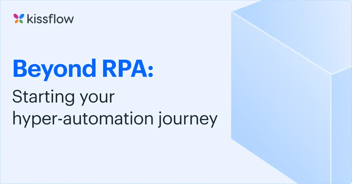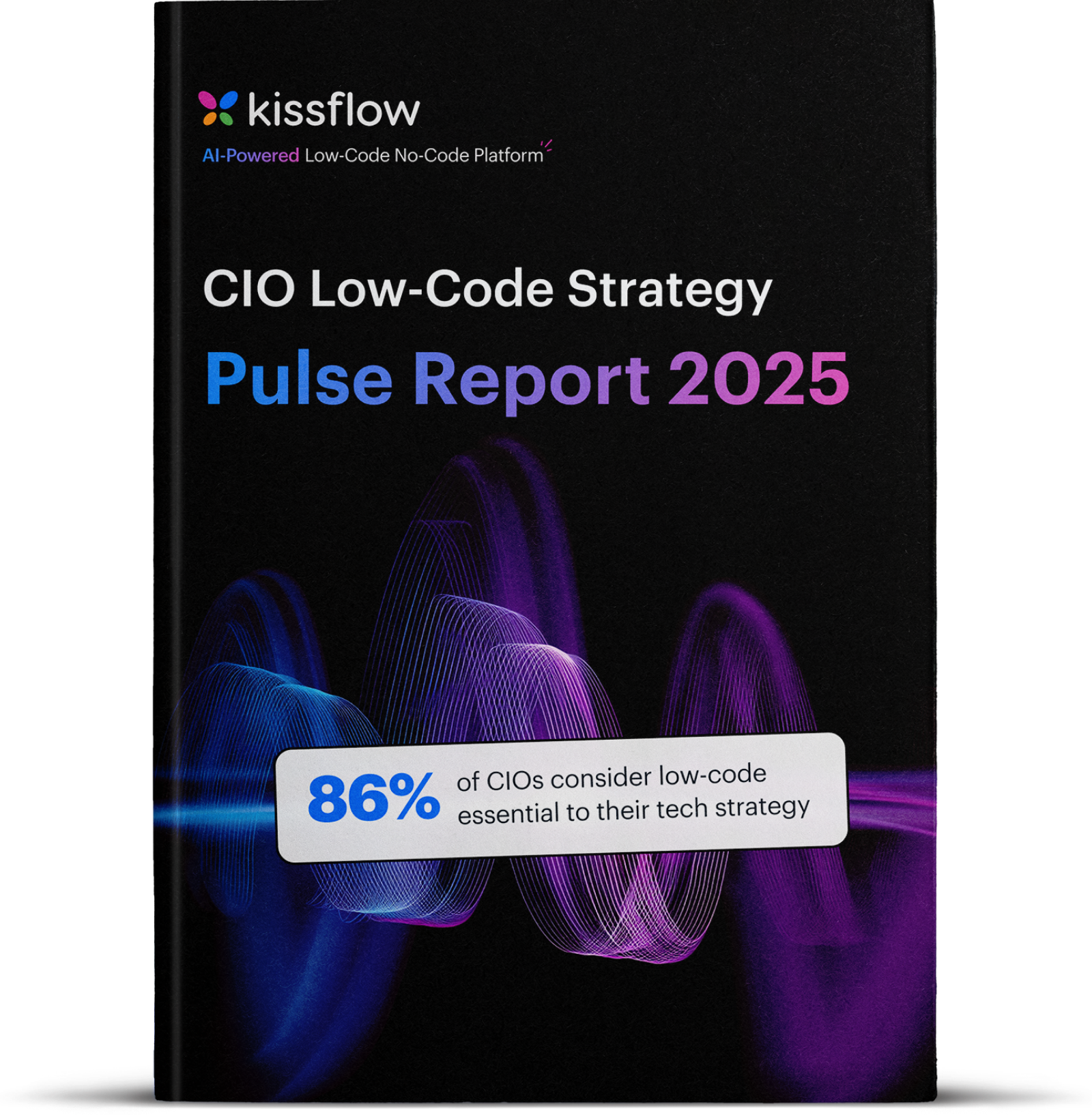
- >
- Workflow>
- Choosing the Best Hyperautomation Platforms for Your Enterprise
Choosing the Best Hyperautomation Platforms for Your Enterprise
Hyperautomation is no longer a buzzword — it’s a strategic priority for CIOs and CTOs. Enterprises want more than just task automation; they want end-to-end orchestration, AI-driven insights, and scalable automation ecosystems. That’s where hyperautomation platforms come in.
These platforms combine RPA, low-code/no-code, AI, workflow automation, and analytics into one cohesive system. The right tool helps enterprises cut costs, boost efficiency, and scale automation across every department.
In this guide, we compare the best hyperautomation tools and software available today, outline what makes them effective, and explain how to choose the right fit for your enterprise.
What to Look for in a Hyperautomation Platform
Before choosing, CIOs should evaluate hyperautomation platforms on these factors:
-
Ease of Integration – Does the platform connect with ERP, CRM, and legacy systems?
-
Low-Code/No-Code Capabilities – Can business and IT users build workflows quickly?
-
AI and ML Support – Does it enable intelligent decision-making beyond rule-based automation?
-
Scalability – Can it handle enterprise-wide automation, not just departmental projects?
-
Governance and Security – Does it ensure compliance while empowering citizen developers?
-
Analytics and Insights – Can you measure ROI, efficiency, and productivity improvements?
10 Best Hyperautomation Platforms for 2026
1. Kissflow
Kissflow is a unified low-code/no-code work platform designed to help enterprises adopt hyperautomation at scale. It integrates process automation, workflow orchestration, AI-powered insights, and app development in a single console. Kissflow stands out for its ease of use, scalability, and governance, making it ideal for enterprises with large IT backlogs.
Strength: Unified platform, fusion team collaboration, enterprise-grade security
Best for: CIOs looking to empower both IT teams and citizen developers
-
Unified Work Platform
Kissflow brings process automation, workflow management, case management, and app development into one console. This eliminates tool sprawl and simplifies enterprise-wide automation.
-
Low-Code and No-Code Flexibility
The platform allows both IT developers (low-code) and business process owners (no-code) to build workflows and apps, accelerating delivery without losing governance.
-
Strong Governance and Security
With built-in compliance (ISO, SOC, GDPR), role-based access, and centralized oversight, Kissflow ensures secure citizen development under CIO control.
-
Pre-Built Accelerators and Templates
Over 400 pre-built process templates and connectors help enterprises launch automation projects quickly, from HR onboarding to procurement workflows.
-
Easy to Use for All Skill Levels
Business users can automate workflows without coding, while IT teams can extend apps with low-code. This reduces IT backlog and boosts agility.
-
Enterprise-Grade Governance
Unlike fragmented automation tools, Kissflow provides centralized governance that allows IT to control while enabling business innovation.
-
Scalable Across Departments
From team-level apps to enterprise-wide workflows, Kissflow scales seamlessly as organizations grow.
-
Strong Support and Community
Kissflow is known for 24/7 support, training, and documentation, making adoption smoother for enterprises new to hyperautomation.
This adaptable program has significantly improved cloud-based productivity and quality. It has been crucial in counteracting acquired data. Its superior user interface is a critical factor in improving administrative performance. For me, it is an excellent value.
I look forward to reaping many benefits from this program soon.
Frank J
Business Development Executive

Experience the power of Kissflow firsthand
2. UiPath
UiPath is a leader in robotic process automation (RPA) that has expanded into hyperautomation. Its strong RPA foundation, combined with AI and process mining, makes it popular among enterprises aiming to automate complex workflows.
Strength: Advanced RPA bots, AI integration, marketplace of pre-built automations.
Best for: Large enterprises with heavy reliance on RPA
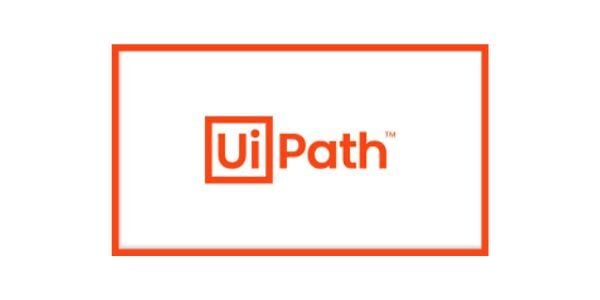
-
Enterprise-Grade RPA Bots
UiPath provides highly scalable RPA bots capable of handling structured and unstructured data across enterprise systems.
-
Process Mining and Task Mining
The platform includes process discovery tools that help identify automation opportunities and inefficiencies.
-
AI Fabric and AI Center
UiPath integrates AI and ML models into workflows, enabling intelligent decision-making alongside automation.
-
Orchestrator Dashboard
Its central orchestrator allows CIOs to monitor, manage, and scale thousands of bots across global operations.
-
Strong RPA Foundation
UiPath is recognized as a leader in RPA and trusted for mission-critical automation in large enterprises.
-
Wide Adoption and Ecosystem
With a global developer community and marketplace, UiPath offers thousands of pre-built bots and connectors.
-
Flexible AI Integration
Supports integration with AI/ML models for smarter automation, enhancing ROI.
-
Enterprise Security and Compliance
Complies with global standards (ISO, SOC, GDPR), ensuring automation is safe and auditable.

“The best thing about ServiceNow App Engine is its easy use and integration with the platform. Users don't need to know excessive amounts of details because they are all present within the studio.”
Harrison L
Enterprise User
-
Steeper Learning Curve
Advanced RPA design and AI integration may require specialized developers.
-
High Licensing Costs
UiPath can be costly for smaller enterprises compared to low-code-first platforms.
-
Heavy IT Dependence
Citizen developers may find it harder to use without IT support.
-
Less Focus on No-Code App Development
Strong for RPA, but weaker in enterprise-grade app creation compared to Kissflow or Appian.

“It's not a user-friendly tool for managing tickets. Someone new to this tool will need time to navigate the UI.”
Akshay B
RPA Specialist
3. Automation Anywhere
Known for its cloud-native RPA platform, Automation Anywhere is also moving into hyperautomation by integrating AI, process discovery, and analytics. It emphasizes bot governance and scale.
Strength: Cloud-first design, strong RPA governance, analytics dashboard
Best for: Enterprises prioritizing cloud deployment
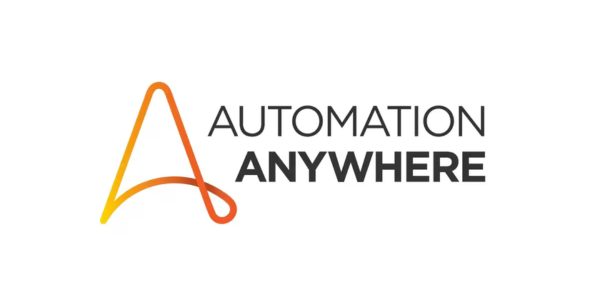
-
Cloud-Native RPA Platform
Automation Anywhere was one of the first RPA vendors to go fully cloud-first, simplifying scalability.
-
Bot Insight Analytics
Real-time analytics to measure bot performance, ROI, and productivity improvements.
-
IQ Bot with AI/ML
Uses AI for document processing, invoice scanning, and semi-structured data automation.
-
Enterprise-Grade Security
Built-in access control, encryption, and compliance features for regulated industries.
-
Cloud-First Advantage
No heavy infrastructure setup, making scaling faster for enterprises.
-
Strong Document Automation
IQ Bot excels at handling unstructured and semi-structured documents.
-
User-Friendly Interface
Simplified UI compared to competitors, reducing training time.
-
Partnership Ecosystem
Integrates with Microsoft, Google Cloud, and Salesforce for enterprise adoption.

“Quickbase allows us to confidently put powerful tools in the hands of our operational owners. We have seen it transform how our teams work - from project management to comprehensive clinical data tracking.”
Sherry M
Sr. Applications Systems Analyst
-
Higher Costs at Scale
Although cloud-native, license and bot scaling costs can rise quickly.
-
Limited Low-Code Development
Not ideal for full citizen development use cases.
-
Complexity in Customization
Advanced customization requires skilled developers.
-
Smaller AI Portfolio
Compared to IBM or Pega, AI features are more limited.

"The price is absolutely asinine! They are making me switch to another competitor because the price is so exaggerated from what you receive. There needs to be a "toned down" version that doesn't require 10 users. Very disappointed in the direction this company has gone. I had hopes this would end eventually but these people are money hungry!"
Jeff H
Installation Specialist
4. Pega
Pega combines intelligent process automation (IPA), AI-driven decisioning, and case management into its hyperautomation suite. It’s particularly strong in industries like banking, healthcare, and insurance.
Strength: AI-powered decision-making, strong case management, industry-specific solutions
Best for: Enterprises needing tailored vertical solutions.
-
Case Management Excellence
Pega is known for complex case management workflows across industries like insurance and banking.
-
AI-Powered Decisioning
Real-time decision engines personalize customer interactions and automate next-best actions.
-
End-to-End Workflow Automation
Automates structured and unstructured workflows across business units.
-
Vertical-Specific Solutions
Industry-specific solutions for BFSI, healthcare, and government.
-
Industry Depth
Pega offers specialized vertical templates for faster adoption.
-
Strong Case Management
Ideal for enterprises needing complex, rule-heavy workflows.
-
Robust AI Decisioning
AI decision engines improve customer engagement.
-
Proven Enterprise Experience
Adopted by Fortune 500 enterprises globally.

"Nintex provides awesome features in all its products like Nintex Forms, Nintex Workflows, NWC and also Nintex App Studio.Best things we like -
1. Code Less - Drag and drop actions and controls to achieve desired effect. preview the changes immediately.
2. Ease of use - Terms and jargons are pretty easy to understand. Even elderly business clients can create and manage their forms and workflows with minimal support."
Chandan D.
Solutions Architect
-
High Cost and Complexity
Implementation costs are significant for smaller organizations.
-
Steeper Learning Curve
Requires skilled developers to unlock full capabilities.
-
Less Suitable for Citizen Developers
Primarily IT-focused; less friendly for non-technical users.
-
Longer Implementation Timelines
Complex projects may take months to go live.

"1. Any action that utilises a pause/wait (Pause until, pause, wait for check in etc) get stuck randomly. The work around provided by nintex does not help if expected to be executed very often.
2. The nintex support team do not do a due diligence of a raised ticket and provide random responses which are of no help whatsoever."
Pallavi D
Associate Manager
5. Appian
Appian offers a low-code automation platform that integrates RPA, workflow automation, and business rules. Its focus is on building enterprise apps quickly while maintaining governance.
Strength: Strong low-code foundation, governance, enterprise app development
Best for: Enterprises focused on speed-to-market.
-
Low-Code Development Studio
Appian enables rapid app creation with a drag-and-drop low-code environment.
-
Integrated RPA and Workflow Automation
Combines task bots with workflow orchestration for enterprise automation.
-
Business Rules Engine
Provides configurable rule sets to govern process execution.
-
Data Fabric Layer
Unifies data across systems without heavy integration.
-
Strong Low-Code Foundation
Ideal for enterprises prioritizing app delivery speed.
-
Data Integration Strength
The Data Fabric connects siloed enterprise systems.
-
Governance Controls
Allows IT to maintain oversight of automation projects.
-
Global Enterprise Adoption
Widely adopted in BFSI and manufacturing sectors.

“With a drag-and-drop interface, seamless data integration, and connections to other Microsoft tools, I can quickly develop powerful apps for my company.”
Vikram J
Sr. Data Analyst
-
Costly Licensing
Appian licenses can be expensive for mid-market firms.
-
Less RPA Depth
Compared to UiPath or Automation Anywhere, RPA is less mature.
-
Limited AI Features
Needs third-party integrations for advanced AI/ML.
-
Complex Upgrades
Large deployments may face challenges during platform updates.

“I think the most challenging aspect of Power Apps is also what makes it easy: the fact that it is part of a platform. Whatever you build will be tied to that platform, and you will have to pay for access to that platform.”
Timothy S
Information Success Coordinator

Experience the power of Kissflow firsthand
6. ServiceNow
ServiceNow started in ITSM but has expanded into enterprise automation. Its Now Platform offers hyperautomation features such as workflow automation, RPA, and AI-driven insights.
Strength: Enterprise IT alignment, workflow orchestration, integration with ITSM
Best for: Enterprises standardizing on ServiceNow ecosystems
-
Workflow Automation Engine
ServiceNow’s Now Platform automates workflows across IT, HR, customer service, and operations, centralizing requests and approvals.
-
RPA Hub
Provides native RPA bots for task automation and integrates with third-party bots to expand automation use cases.
-
AI and Predictive Intelligence
Leverages machine learning to recommend next actions, prioritize tickets, and improve service delivery.
-
Strong ITSM Foundation
Built on IT Service Management (ITSM), ServiceNow is particularly strong for IT operations and service desk automation.
-
Enterprise-Grade IT Integration
Seamlessly integrates automation into IT workflows, reducing silos.
-
Strong Governance
Centralized IT oversight ensures automation aligns with enterprise standards.
-
Extensive Ecosystem
ServiceNow Store offers thousands of partner-built apps.
-
Proven Scalability
Adopted by large enterprises with tens of thousands of users.

“The development of business and customer-facing applications is fast and relatively simple with OutSystems. Prototyping is easy, and it takes a lot of standard development work out of a developer's hands.”
Ramon P
Enterprise User
-
IT-Centric Approach
Less suited for business-led citizen development compared to Kissflow or Appian.
-
High Licensing Costs
Expensive platform, especially for mid-sized firms.
-
Steep Learning Curve
Requires skilled administrators for customization.
-
Limited Non-IT Use Cases
Strength is ITSM; weaker in line-of-business automation.

“Lack of testing automation tools to perform regression tests is an issue. Feature branching is also not available.”
Raymond K
Information Systems Analyst
7. Microsoft Power Automate
Part of Microsoft’s Power Platform, Power Automate combines workflow automation, RPA, and AI Builder. It integrates naturally with Office 365, Dynamics 365, and Azure.
Strength: Deep Microsoft ecosystem integration, AI builder, strong RPA capabilities.
Best for: Enterprises already invested in Microsoft stack

-
Seamless Microsoft Integration
Tightly integrates with Office 365, Dynamics 365, Azure, and Teams.
-
RPA + AI Builder
Includes desktop RPA bots and AI Builder to add intelligence to workflows.
-
Process Advisor
Built-in process mining feature that identifies automation opportunities.
-
Large Connector Library
Over 500+ pre-built connectors for SaaS and enterprise applications.
-
Strong Ecosystem Integration
Best fit for enterprises already invested in the Microsoft stack.
-
Affordable Pricing
Entry-level plans are more affordable compared to UiPath or Pega.
-
Citizen Developer Friendly
Business users familiar with Excel/PowerApps can adopt easily.
-
Regular Updates
Frequent feature releases via the Microsoft ecosystem.

“It's convenient to develop and validate your ideas, especially if you love using Google Sheets.”
Ahmad Fadlan A
Product Manager
Computer Software
-
Limited Governance Controls
Enterprises may face shadow IT risks without strict oversight.
-
Scaling Challenges
Less suitable for very complex enterprise-wide automation.
-
Reliance on Microsoft Stack
Best performance is within Microsoft ecosystem; weaker outside it.
-
Steep Learning Curve for RPA
More advanced RPA features may require IT expertise.

“I dislike that Glide is missing basic and simple features like push notifications and the ability to send pictures and voice messages through the chatrooms. Also, automated notifications aren't available.”
Brianna S
8. IBM Cloud Pak for Business Automation
IBM’s automation suite integrates RPA, AI, workflow automation, and content services. Its strength lies in AI-powered insights backed by IBM Watson.
Strength: Watson AI integration, strong analytics, hybrid cloud support
Best for: Enterprises needing advanced AI-driven hyperautomation.

-
Watson AI Integration
Leverages IBM Watson for advanced AI/ML, including natural language processing and predictive analytics.
-
Content and Document Automation
Automates document management, contract analysis, and compliance workflows.
-
Workflow Automation
Provides tools for process orchestration across departments and systems.
-
Hybrid Cloud Deployment
Supports both on-premise and cloud for enterprises with strict regulatory needs.
-
Advanced AI Capabilities
Best-in-class AI features for intelligent automation.
-
Hybrid Flexibility
Can run on-premise, cloud, or hybrid, meeting regulated industry needs.
-
Strong Document Automation
Ideal for enterprises handling large volumes of content.
-
Enterprise Security
Built-in compliance with SOC, GDPR, HIPAA, ISO.

"The platform's user-guiding features are quite helpful for directing the individual when developing apps."
Hima Varsha C
PMO Analyst
-
Complex Implementation
Requires skilled teams for deployment and management.
-
High Total Cost of Ownership
Licensing, setup, and support are expensive.
-
Less User-Friendly
Not ideal for citizen developers; heavily IT-focused.
-
Slow Deployment Timelines
Large-scale deployments can take months.

"It is helpful to have more features such as Gantt charts or similar alternatives that allow us to perform more internal research while observing the data."
Ramakrishna M
Software Engineer
9. Blue Prism
Blue Prism pioneered RPA and now positions itself as a digital workforce platform for hyperautomation. It emphasizes governance, scalability, and compliance.
Strength: Strong governance, compliance-ready automation, large enterprise adoption.
Best for: Highly regulated industries (finance, healthcare, government)
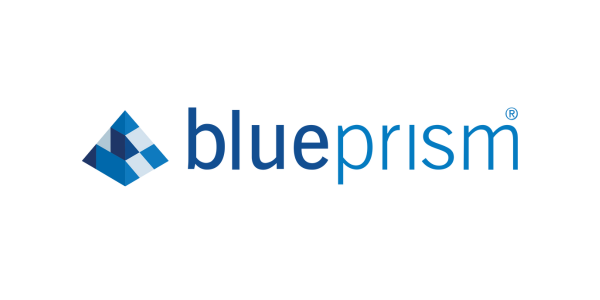
-
Digital Workforce Concept
Positions bots as a digital workforce with governance and control.
-
Enterprise-Grade RPA
Strong RPA foundation for structured workflows.
-
Compliance-Focused Automation
Pre-built compliance features for regulated industries.
-
Partner Marketplace
Offers reusable components via the Blue Prism Digital Exchange.
-
Governance Strength
Recognized for robust compliance and oversight.
-
Large Enterprise Adoption
Trusted in BFSI, healthcare, and government.
-
Strong Partner Ecosystem
Supports integrations with AI, ML, and analytics vendors.
-
Secure and Reliable
High focus on security and resilience for critical processes.

“Creatio has proven to be our partner by accommodating and customizing our sales process where needed.”
Nynke P
Small Business User
-
Expensive Licensing
Premium pricing compared to mid-market platforms.
-
Limited No-Code Capabilities
Heavily IT-driven, less accessible to citizen developers.
-
Slower Innovation Pace
Behind competitors in AI-driven automation.
-
Steep Learning Curve
Requires specialized RPA training.

"Need an understanding of HTML code to navigate their Marketing platform, which has been a problem for our small team. We actually ended up deciding not to use their marketing platform at all. It was not user friendly in the least and had too many workarounds to make it effective. It was a huge time waster for us."
Rebecca M
Business Development Assistant
10. WorkFusion
WorkFusion blends RPA and AI-powered digital workers, focusing on automating knowledge-intensive processes such as compliance and fraud detection.
Strength: AI-first approach, compliance automation, strong in BFSI
Best for: Enterprises automating risk and compliance-heavy processes.
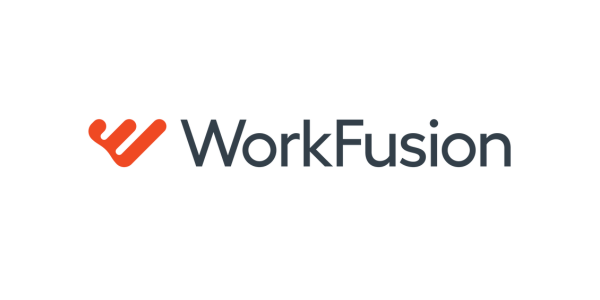
-
AI-First Digital Workers
Pre-trained AI models for compliance, fraud detection, and risk management.
-
Intelligent Document Processing
Excels at automating document-heavy workflows.
-
Cloud-Native Platform
Cloud-first approach makes scaling easier for enterprises.
-
Compliance Automation
Focus on BFSI compliance automation such as KYC and AML.
-
Strong BFSI Focus
Specialized in financial services automation.
-
AI-Powered Pre-Built Models
Ready-to-use AI saves setup time.
-
Cloud Scalability
No heavy infrastructure investment required.
-
Document Automation Strength
Handles unstructured and semi-structured documents well.

“It's easy to use, offers quick deployment, and has a user-friendly interface.”
Luis Antonio E
-
Niche Industry Focus
Best for BFSI; less relevant for manufacturing or retail.
-
Limited Low-Code Features
Not a full low-code platform; IT involvement required.
-
Smaller Ecosystem
Fewer third-party integrations compared to UiPath or Microsoft.
-
High Learning Curve
AI-heavy design requires training.

“Customization of the interface is basic. Fonts and colors are difficult to change if even possible.”
Jean-Luc G
Conclusion
Choosing the right hyperautomation platform is about more than picking a tool — it’s about adopting a strategy that scales. CIOs and IT teams must evaluate platforms on integration, scalability, governance, and business value.
Kissflow offers a unified hyperautomation platform that helps enterprises clear IT backlogs, empower citizen developers, and orchestrate workflows across the organization.
With these 10 hyperautomation platforms, CIOs and digital leaders have a wide range of choices — from RPA-first vendors like UiPath and Blue Prism to low-code-first platforms like Kissflow and Appian, and AI-driven suites like IBM Cloud Pak and WorkFusion.
Kissflow stands out as a balanced hyperautomation platform that combines ease of use, governance, and scalability, making it a strong choice for enterprises seeking both IT control and citizen development flexibility.
FAQs About Hyperautomation Platforms
1. What are hyperautomation tools?
Hyperautomation tools are software platforms that combine RPA, AI, workflow automation, and analytics to automate business processes end-to-end.
2. Which is the best hyperautomation software?
The best hyperautomation software depends on enterprise needs. Platforms like Kissflow, UiPath, and Pega are top choices for CIOs leading automation initiatives.
3. How do hyperautomation platforms differ from RPA tools?
RPA focuses on task automation, while hyperautomation platforms integrate RPA with AI, low-code, and orchestration for enterprise-wide automation.
4. Why should CIOs invest in hyperautomation software?
Hyperautomation software reduces costs, improves productivity, and enables digital transformation by orchestrating automation across all business units.
Ready to see Kissflow in action?
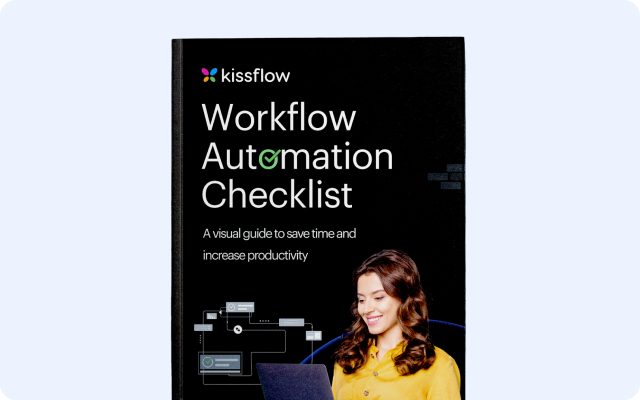
Checkout Kissflow's Workflow Automation Checklist
Thank you for downloading the ebook!
Related Articles


